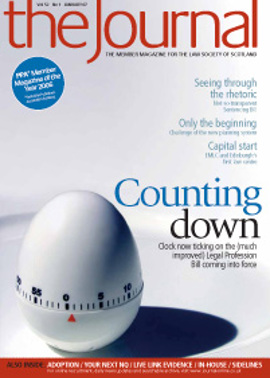Letting in the disabled

Much of the recent coverage of the Disability Discrimination Act 2005 (“DDA 2005”) has focused on the disability equality duty placed on the public sector. It is likely, however, that the sections of this Act which apply to the letting of property will have the most immediate effect on disabled people, who are currently half as likely to rent privately as non-disabled people.
Part 3 of the Disability Discrimination Act 1995 (“DDA 1995”) placed a lesser burden on those letting or managing property than those providing other commercial services. Whilst discrimination by, for example, refusing to let or offering a lease on worse terms is unlawful, those letting or managing property were not required to make reasonable adjustments to the way the service was provided.
The DDA 1995 has been amended by the DDA 2005 to address this situation. From 4 December 2006, those letting or managing property are required to make “reasonable adjustments” to policies, practices, procedures and terms that prevent a disabled person using or enjoying rented facilities. A landlord could, therefore, have to waive a “no dogs” policy for a tenant who requires an assistance dog.
Inclusions and exclusions
This new requirement to make reasonable adjustments also requires the provision of auxiliary aids or services requested by a tenant. A landlord could, for example, receive a request to replace round-headed taps with lever taps for a tenant’s disabled child whose impairment makes it difficult to grip objects. Alternatively, a managing agent could be asked to provide a tenancy agreement in large print by a tenant with a visual impairment.
Whilst the costs of making such adjustments cannot be passed directly to the tenant, landlords and property managers can be assured that their duties are not limitless. An adjustment is only required to result in benefit in relation to the occupation of the let premises. A landlord is not, therefore, required to provide a wheelchair for general use by a disabled tenant. Other exclusions, such as premises which are the principal home of the landlord, and changes that would raise health and safety issues, also apply.
Arguably the most important exclusion, however, is that of the requirement to remove or alter a physical feature of let property. The closest a landlord in Scotland gets to being required to do so is to be found in Chapter 7 of the Housing (Scotland) Act 2006, which also came into force on 4 December. This requires that a landlord does not unreasonably refuse a request from a tenant to adapt their let property. What is “reasonable” depends on factors such as the nature of the disabled person’s impairment, what is being requested and the length of the tenancy, amongst others.
Permissions and conditions
A tenant is required to request agreement from their landlord before they carry out works, which must be intended to make the property suitable for the accommodation, welfare or employment of a disabled person. If the landlord must seek permission from someone else before the adaptation can take place, they must attempt to do so, although they can pass on any costs they incur. Examples of such permissions could be requesting agreement from a mortgage lender, or obtaining planning permission or a building warrant.
A landlord must give or refuse permission, or give permission subject to conditions, within a month of a request. Tenants do not have an automatic right to leave a property adapted at the end of the tenancy. A landlord could, therefore, include a condition that a tenant removes a ramp installed to enable access for a disabled person.
Failure to respond to a request within a month does not give the tenant a right to make the adaptation. Silence is presumed to indicate refusal of permission by the landlord. Aggrieved tenants can use the Disability Rights Commission’s conciliation service or apply, within six months of the refusal, to the sheriff court to order the landlord to give consent or withdraw an unreasonable condition.
The effect of this new right to adapt will be tempered by the need for the tenant to arrange and pay for the adaptation themselves. Whilst they may receive an adaptation grant from their local authority to make the adaptation, they will not have a right to receive assistance to reinstate the property until the relevant section of the Housing (Scotland) Act 2006 is implemented in 2007 or 2008.
Richard Hamer is Director of Ownership Options, a Scottish charity which aims to resolve the housing problems faced by disabled people.
The organisation welcomes solicitors who, from time to time, are willing to offer informal general legal advice which helps inform our approach. If you are interested in this area please contact richard@oois.org.uk
In this issue
- The Isle of Man
- Contractual handcuffs: enhanced redundancy rights
- Strength of purpose
- Cleared for take-off
- Countdown phase
- A quiet revolution
- Acting your age
- Adopting new solutions
- Clear as mud?
- Majoring in minorities
- Believe in the future
- Appreciation: Dr J Stuart Fair
- Grow your own assistant
- On the radar
- Status of the expert's report
- Rewarding experience
- Restructuring - in hindsight
- Court rules catch up with live link TV
- Scottish Solicitors' Discipline Tribunal
- Website reviews
- Book reviews
- Top notch training
- A clearer way to deal
- Not the best option
- Letting in the disabled
- Single survey: have your say






